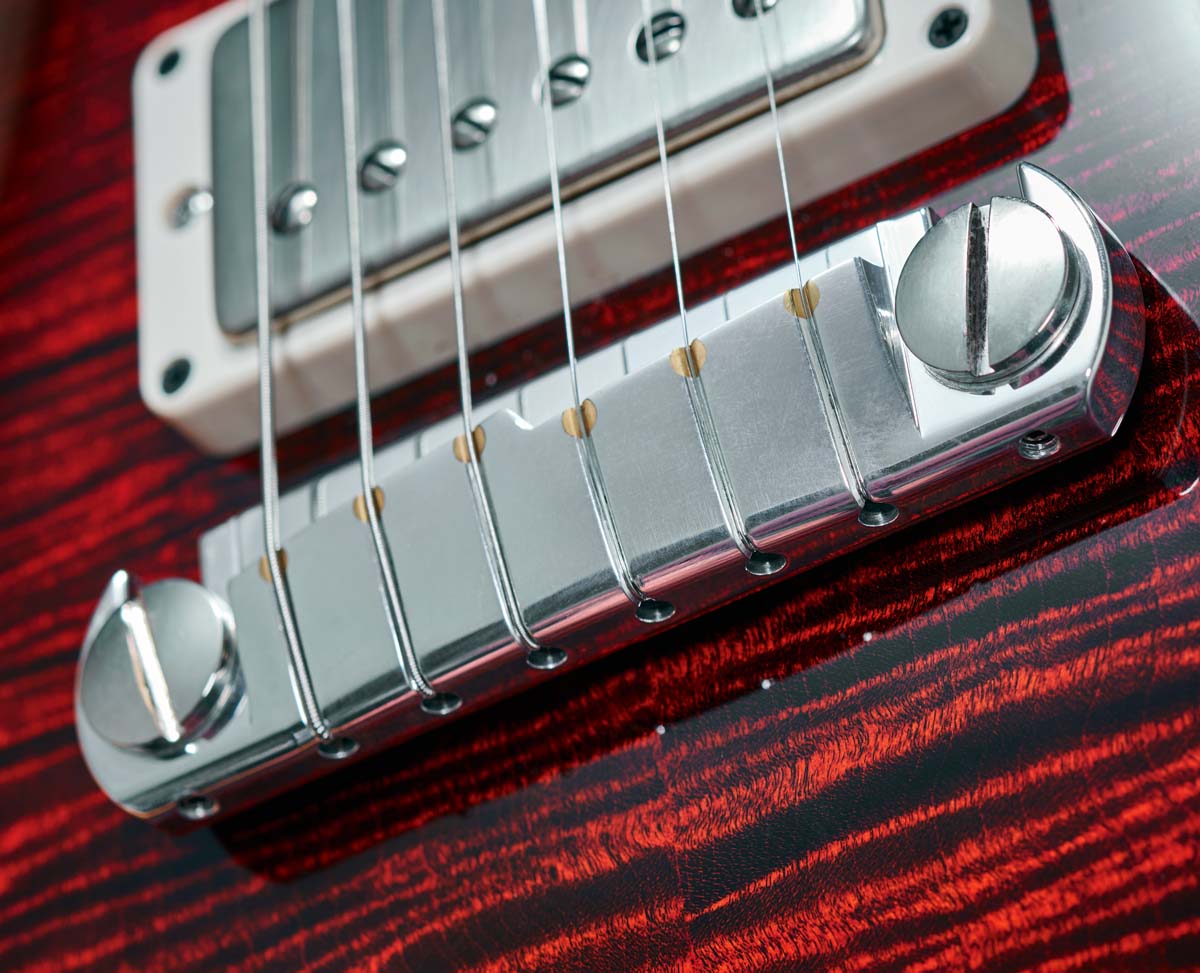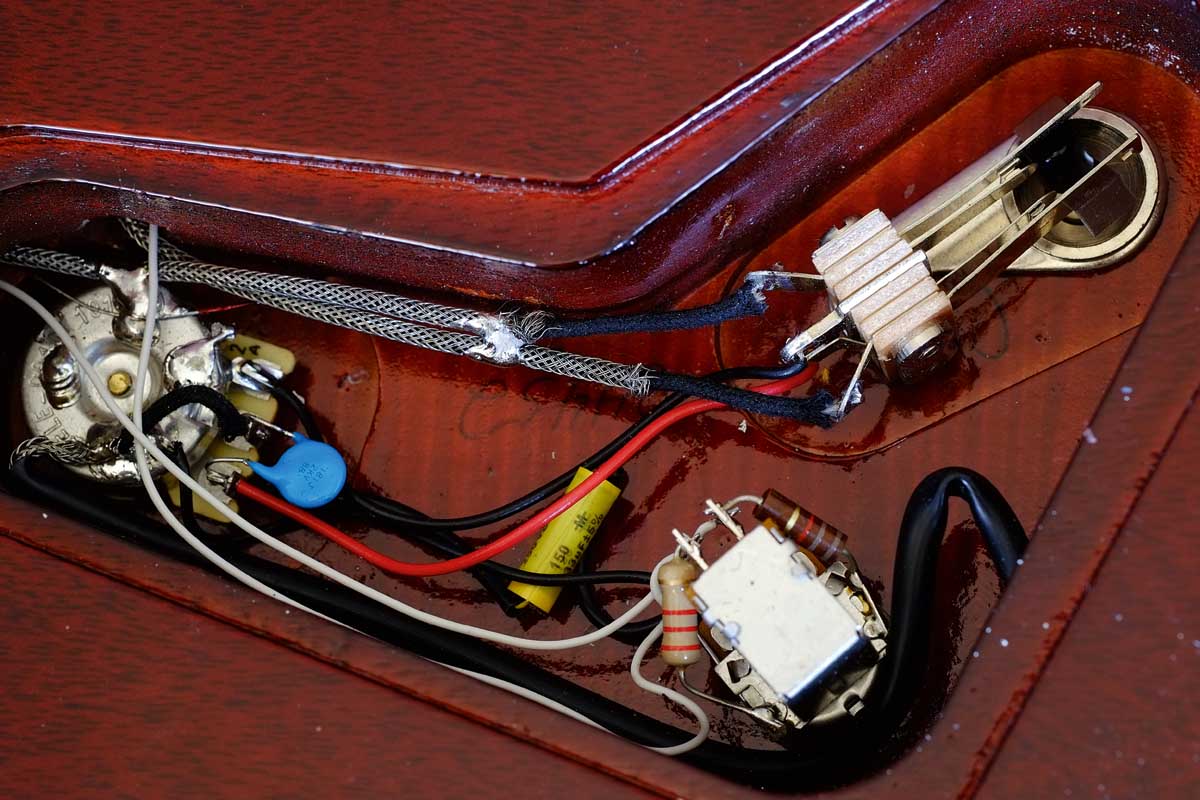Guitar World Verdict
The McCarty reimagines the vintage-voiced electric for the present day with a wide variety of grown-up tones covering smooth jazz, blues-rock and all in between.
Pros
- +
Exceptionally detailed build.
- +
Good weight.
- +
Playability.
- +
New hardware spec.
- +
Versatile voices.
Cons
- -
Yes, it’s costly.
- -
Considerable competition from other Core and new S2 models.
You can trust Guitar World
Ted McCarty looms large in the early history of PRS Guitars: he was the Gibson president during its halcyon days who, in the words of Paul Reed Smith, “downloaded the hard disk” on how they made guitars back then.
While Ted had no direct involvement in the McCarty Model that launched in 1994, at the time it was the most ‘vintage-style’ PRS, with the changes Paul had already made to his Custom recipe – for example, a 22-fret version, the development of the pre-intonated Stoptail wrapover bridge, plus suggestions that early PRS-user David Grissom had requested.
Over the years, the player’s favourite dropped in and out of production, but it returned recently in 2016, and for 2020 it has a subtle refresh that brings it bang up to date.
Back in 1994, although still based on the now-classic PRS double-cut outline, the McCarty Model’s body, specifically the mahogany back, was increased in depth by approximating 3mm (1/8-inch) to just over 52mm, a change that we see on all PRS Core guitars today, with the exception of the 49mm-thick Custom.
The 22-fret neck was shorter and therefore stiffer, and these changes to the acoustic voice were enhanced by new, more vintage-aimed McCarty covered humbuckers and a more classic electronics circuit that installed a three-way Gibson-style toggle instead of the polarising five-way rotary switch of the early guitars.
A little while later, around 1996, a coil-split switch on the tone controls completed the package.
The weight of the tuning pegs makes a difference. The tension between the gear and the worm makes a difference. I hear a difference, a beautiful difference
Paul Reed Smith
Today’s McCarty follows that blueprint, but obviously includes all the tone-enhancing tweaks we’ve seen in the past couple of decades.
All the latest guitar news, interviews, lessons, reviews, deals and more, direct to your inbox!
The 2020 McCarty adds the machined aluminium Paul’s Guitar Stoptail bridge with its brass inserts under the witness point of each string, which Paul believes creates more of the sound of a brass bridge but without the weight.

While the pre-intonated Stoptail bridge dates back to 1991, this contemporary version, as used on the Core and SE Paul’s Guitar, features small brass inserts under each string. It’s also nickel-plated.

These two-piece bird inlays have a green ripple abalone centre with vintage ivory acrylic edges. The rolled-top edge binding is vintage ivory acrylic.
While the 2016 model used the latest-spec Phase III locking tuners with their unplated string posts, the 2020 reverts to the vintage Kluson-style tuners of the original model, a change back then from the rather clunky cam-lock tuners of Paul’s original vision.
“The weight of the tuning pegs makes a difference,” states Paul Reed Smith today. “The tension between the gear and the worm makes a difference. I hear a difference, a beautiful difference, and I think we’re doing it for very grounded reasons.
“Yes, there have been discussions here about whether the weight of the tuners made a difference, so we went into Jack Higginbotham’s office [PRS’s chief operating officer] and we changed the tuners right in front of everybody and asked if they could hear the difference.
“You were in that meeting; could you hear a difference?” Paul asks PRS’s director of marketing, Judy Schaefer, who was sitting in on our interview. “Absolutely!” she replies.
“It was eye opening for everybody,” continues Paul. “I was making a claim and they accepted it.”
The scale length, bridge, master volume and tone setup add up to make the McCarty much broader than a vintage-chasing clone
The final piece of this 2020 McCarty puzzle is a new nitro-over-cellulose finish, or NOC, that originally was called CAB. But what does that actually mean?
“It’s simple,” says Paul to clarify. “CAB stands for cellulose acetate butyrate. It’s nitrocellulose lacquer mixed with Plexiglas. It’s crystal clear and acts a lot like nitro – it makes a wonderful base coat and we spray nitro over it.
“It’s that simple: it’s a nitro-ish base coat with a topcoat of nitrocellulose lacquer. It works great, looks great and sounds great. It’s now used on all USA PRS guitars except Private Stock and the David Grissom’s [DGTs], which are all nitro.”

The headstock facing is East Indian rosewood to match the fingerboard. The inlaid signature logo is vintage ivory acrylic, while the truss rod cover is actually anodised aluminium with an engraved McCarty logo. The top nut here is bone.

For this year, the McCarty reverts to vintagestyle non-locking tuners, with unplated brass string posts and faux bone buttons instead of the Phase III locking tuners of the 2016 version.
Under The Hood
Another abbreviation, TCI (Tuned Capacitance Inductance) refers to a relatively new way in which PRS has been able to ‘see’ the response of the pickup and, where necessary, ‘tune’ it, as well as the actual control circuit. So, although the 58/15’ buckers have been with us for the past five years, they’ve been constantly tweaked.
Typically, the bridge pickup is slightly hotter than the neck pickup. Here, the ‘LT’ suffix means ‘low turns’ – effectively both are neck pickups and have the same output.
There’s a very standard PRS circuit that’s used on the majority of the company’s two-control guitars. Pots are 500k audio, the volume has the standard 180 picofarads treble-bleed cap, the tone capacitor is .033 microfarads, and the controls are wired modern-style.
The pull-switch on the tone control operates the simultaneous partial split (voicing primarily the humbuckers’ screw coils) with a 2.2kohms resistor from the bridge pickup’s split wire to ground and 1.1k on the neck pickup.
Feel & Sounds
There’s an immediately engaging classic feel to the neck’s Pattern profile, previously known as the Wide Fat. It’s not quite as deep as the 594’s Pattern Vintage profile and feels a little more V’d thanks to the tapered shoulders, especially noticeable in lower positions.
The cream binding doesn’t alter the feel, the top edges are nicely rounded, and the fretwork – as it should be – is superb with slightly more height than the S2 wire (see our S2 round-up review later in this issue). Setup is very consistent across all the guitars we have on review – very little relief, with string height set bang on 1.6mm on both treble and bass sides.
The versatility from its pickup switching alone is fairly dramatic in that the single-coil voices combine an almost Tele-like nasality at the bridge with a clear, defined but not over-sharp neck pickup
It’s a lovely light (but not feather-light) weight, too, with generous acoustic response and ring – always a feature of any high-line PRS we’ve ever played. Sonically, it’s difficult to drop the McCarty into a pigeonhole.
If you like the airier sounds of what we’d class as PAF-style pickups, the McCarty should be on your radar, but although the 594 might chase that aim a little more closely, the scale length and the wrapover bridge here, not to mention the master volume and tone setup, all add their own spice to make the McCarty much broader than just a vintage-chasing clone.
The versatility from its pickup switching alone is fairly dramatic in that the single-coil voices combine an almost Tele-like nasality at the bridge with a clear, defined but not over-sharp neck pickup and a crisp hollowed mix that alone would get you through a huge swathe of styles.

The 58/15 ‘LT’ humbuckers both have the same output; the standard set has a hotter bridge pickup. Both have PRS’s partial-splits, which primarily voice the screw coils.

The humbucking mode, of course, ups the beef, and don’t think these are in any way underpowered. On this platform the bridge drips classic rock with a definite nod to the Les Paul, although there’s a clarity to the bridge that cuts through an overmushy amp voice.
Using your volume and tone isn’t essential, but it’s the key to a treasure trove of voices
The neck, meanwhile, is perfectly balanced in output and does quite a trick of combining clarity with thickness. Despite the treble-bleed cap here, the volume still pulls down the crispness a little when reduced, while the tone works just as you need to pull back those highs.
We don’t have the additional humbucker/single-coil blends of the four-control 594, but this is a very direct PRS-style drive and we can certainly say from gigging experience that it’s fast in use, allowing you to really coax out stellar sounds. Using your volume and tone isn’t essential, but it’s the key to a treasure trove of voices.
Add in the inherent stability (which meant, once again, that we barely touch the tuners, not to mention the intonation) and, well, it’s all a part of the quality proposition. Effortless in every regard.
Verdict
With the ever-present Custom on one side and the trending 594 on the other – not to mention Paul’s Guitar, the DGT and even the 509 or the new S2 594s – the McCarty would seem to outsiders like us to have considerable competition within PRS’s own catalogue, let alone in-store.
But this new refreshed version keeps it very up to date, while the direct, simple drive, surprisingly versatile vintage-referenced voices, particularly the coil-splits, and a very grown-up vibe still have considerable appeal. It’s just as at home with smooth 50s jazz as it is as a gurning classic blues-rock machine, sitting in general terms between that Custom and the 594.
There’s not a hair out of place and, although far from an impulse buy, the experience of its makers drips from every note. It’s always been a Guitarist favourite and unquestionably still is.
Specs
- PRICE: $3,800 / £3,499 [inc. case]
- ORIGIN: USA
- TYPE: Double-cutaway, carved-top solid-body electric
- BODY: Mahogany with flame maple carved top
- NECK: 1piece mahogany, Pattern profile, glued-in
- SCALE LENGTH: 635mm (25”)
- NUT/WIDTH: Bone/43.13mm
- FINGERBOARD: Faux-bone bound rosewood, bird inlays, 254mm (10”) radius
- FRETS: 22, medium
- HARDWARE: PRS Stop-tail with brass inserts, vintage-style (non-locking) tuners – nickel plated
- STRING SPACING, BRIDGE: 52.5mm
- ELECTRICS: 2x PRS 58/15 ‘LT’ covered humbuckers, 3-way toggle pickup selector switch, master volume and tone control (with pull/push coil-split switch)
- WEIGHT (kg/lb): 3.16/6.95
- OPTIONS: With 10-grade figured maple top and hybrid hardware ($4,430 / £4,125); Artist Pack upgrade (£POA)
- RANGE OPTIONS: Other 22-fret double-cuts include the DGT (from $3,780 / £3,350), Custom 22 ($3,700 £3,459), McCarty 594 ($3,800 / £3,699) and Paul’s Guitar ($3,850, £3,799)
- LEFT-HANDERS: No
- FINISHES: Fire Red Burst (as reviewed) from choice of 19 standard colours – all gloss nitro-over-cellulose
- CONTACT: PRS Guitars

Dave Burrluck is one of the world’s most experienced guitar journalists, who started writing back in the '80s for International Musician and Recording World, co-founded The Guitar Magazine and has been the Gear Reviews Editor of Guitarist magazine for the past two decades. Along the way, Dave has been the sole author of The PRS Guitar Book and The Player's Guide to Guitar Maintenance as well as contributing to numerous other books on the electric guitar. Dave is an active gigging and recording musician and still finds time to make, repair and mod guitars, not least for Guitarist’s The Mod Squad.



